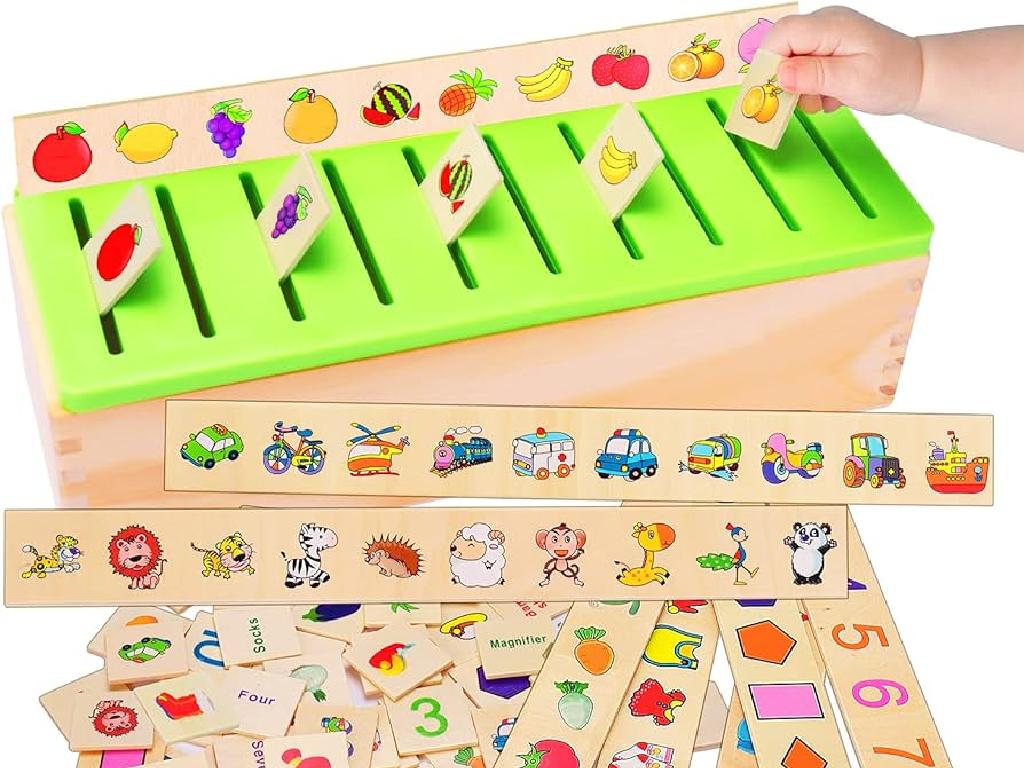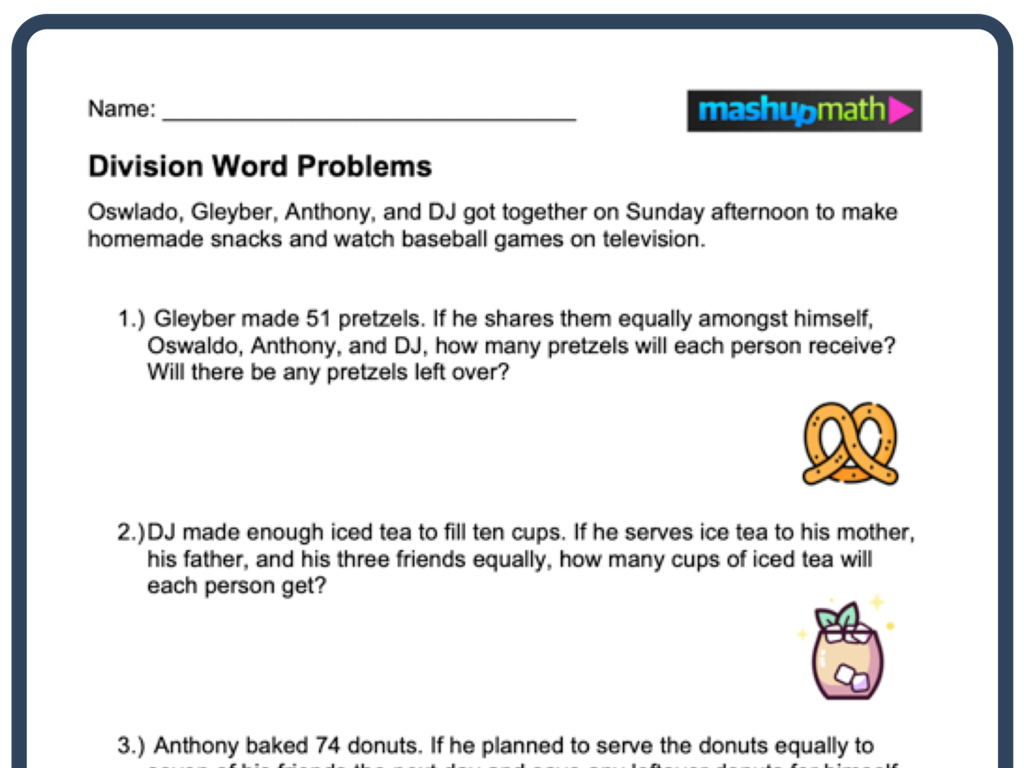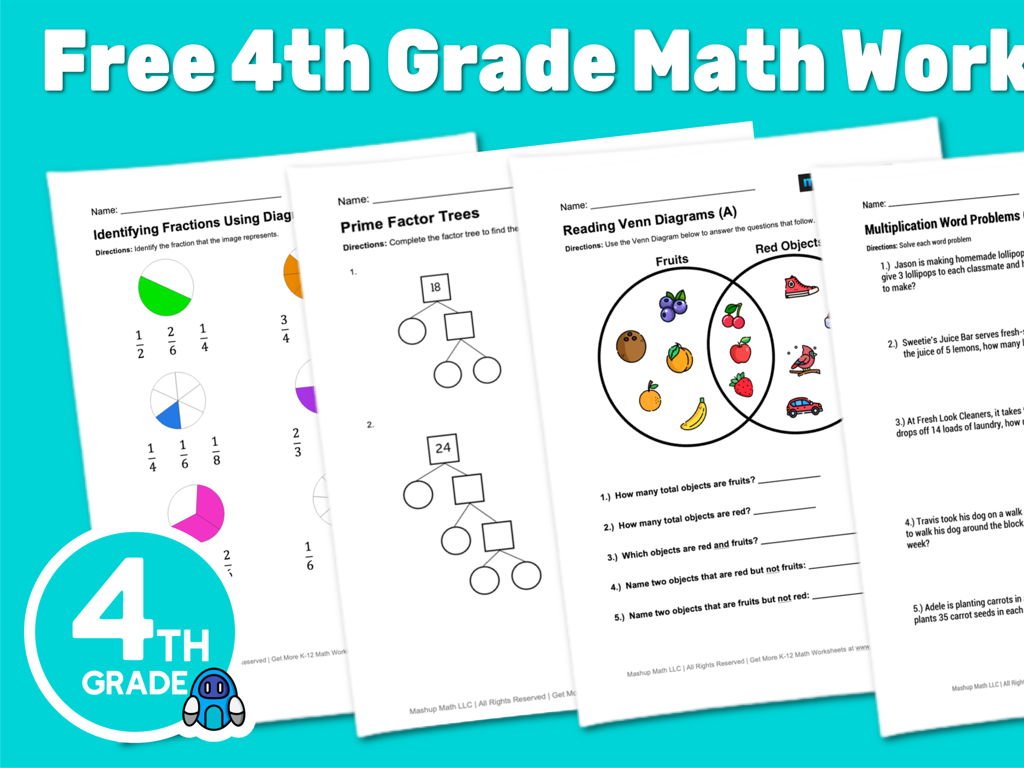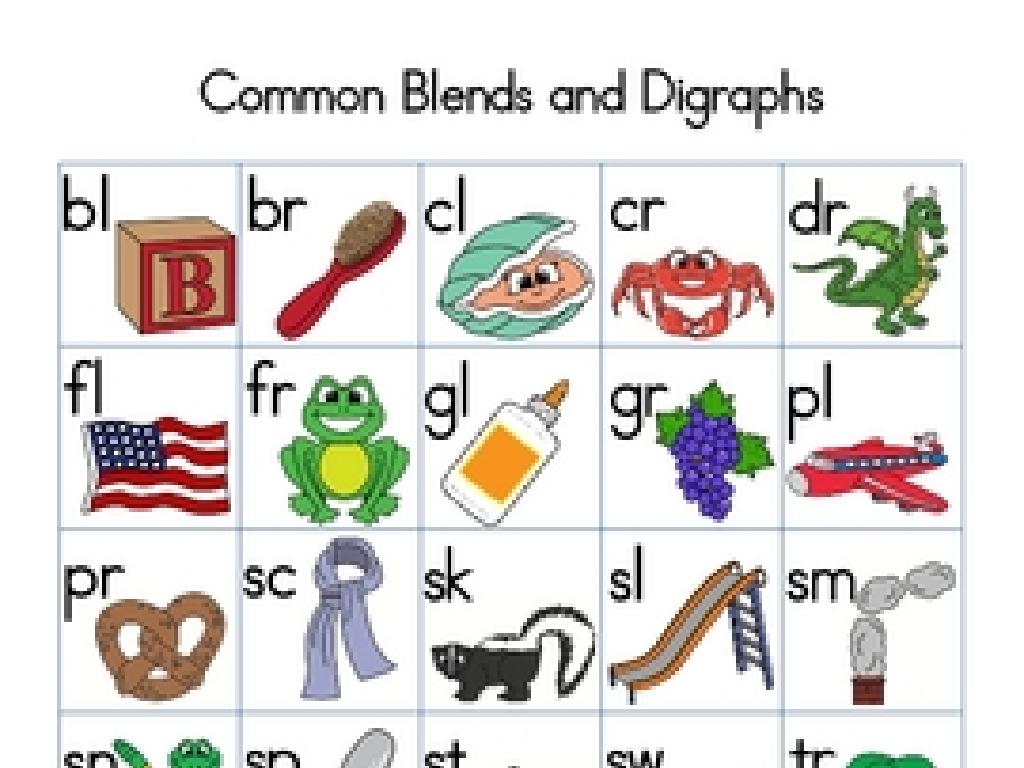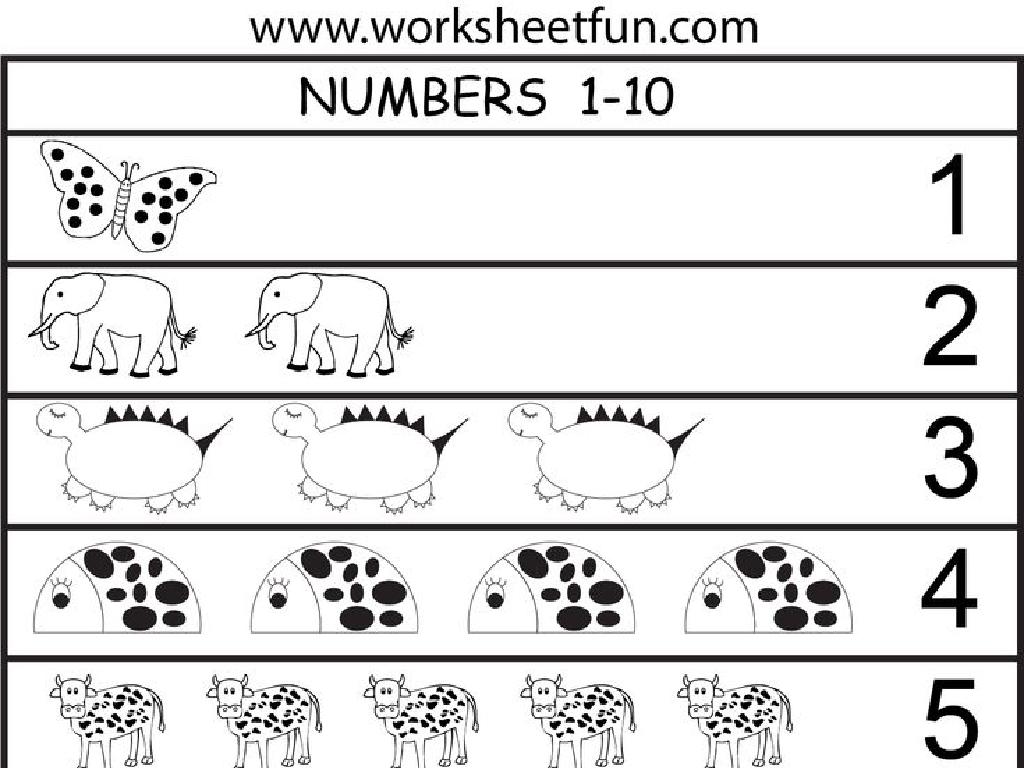Comparison Word Problems Up To 10: How Many More?
Subject: Math
Grade: First grade
Topic: Comparison Word Problems Up To 10
Please LOG IN to download the presentation. Access is available to registered users only.
View More Content
Math Explorers: Becoming Comparison Detectives
– Introduction to comparison
– Understanding ‘how many more’
– ‘How many more’ means finding the difference between two amounts.
– Counting skills in action
– Practice counting objects up to 10 to find answers.
– Solving comparison puzzles
– Use clues to compare two sets of items and find ‘how many more’.
|
This slide introduces the concept of comparison in the context of word problems for first graders. The focus is on the phrase ‘how many more’, which is a fundamental part of understanding comparison word problems. Emphasize the importance of counting accurately and using subtraction to find the difference between two numbers. Engage the students with simple puzzles that require them to count two sets of items and determine ‘how many more’ one set has compared to the other. Encourage them to explain their thought process and how they arrived at the answer. This will help build their confidence in solving comparison word problems.
Understanding ‘How Many More’
– ‘How many more’ compares groups
– It shows difference in quantity
– Practice finding the larger group
– If Tom has 3 apples and Jerry has 7, who has more?
– Use subtraction to find ‘how many more’
– Subtract smaller number from larger: 7 (Jerry’s apples) – 3 (Tom’s apples) = 4 more apples
|
This slide introduces the concept of ‘how many more’ to first graders, which is a fundamental comparison skill in mathematics. It’s crucial to explain that ‘how many more’ is used to find the difference between two quantities. Use simple, relatable examples to illustrate this concept, such as comparing the number of apples or toys two people have. Encourage the students to identify which group has more and then use subtraction to find out ‘how many more’. Provide several examples and practice problems where students can apply this concept, ensuring they understand that ‘how many more’ refers to the additional amount one group has over another.
Counting to Compare: How Many More?
– Count items in each group
– Compare to find the bigger group
– Find the difference between groups
– If Group A has 7 and Group B has 4, the difference is 3
– Understand ‘how many more’
– ‘How many more’ means the extra items one group has
|
This slide introduces students to the concept of comparison in math through counting. Start by having students count items in two separate groups. Once they have the totals, guide them to compare the numbers to determine which group has more items. The term ‘how many more’ refers to the difference in quantity between the two groups. For example, if one group has 7 apples and another has 4, students should be able to calculate that the first group has 3 more apples. Use manipulatives like blocks or counters to help students visualize the comparison and difference. Encourage students to practice with various examples and to explain their thought process.
Counting and Comparing: Apples and Oranges
– Count the apples
– Count the oranges
– Which has more?
– Compare the two groups
– How many more apples?
– Subtract the smaller number from the larger
|
This slide introduces students to comparison word problems involving simple subtraction. Start by having the students count the number of apples and oranges in two separate groups. Then, ask them to determine which group has more items. The final step is to find out how many more apples there are than oranges by subtracting the number of oranges from the number of apples. This exercise helps students practice counting, comparing quantities, and introduces the concept of subtraction as a means to find ‘how many more’. For the activity, you can use real fruit, pictures, or drawn images to visually represent the problem. Encourage students to explain their thought process and how they arrived at the answer.
Counting Balloons and Candies
– Count the number of balloons
– Count the number of candies
– Determine how many more balloons
– If there are 8 balloons and 5 candies, how many more balloons are there?
– Practice careful counting
– Take your time to count accurately
|
This slide is aimed at helping first graders practice comparison word problems by counting items. The example problem uses balloons and candies, which are familiar and engaging objects for children. The goal is to count each group of items and then compare the quantities to find out ‘how many more’ of one item there is than the other. This exercise not only reinforces counting skills but also introduces basic subtraction in a practical context. For the activity, ensure students understand they are to count each item separately and then compare the two numbers. Encourage them to use their fingers or drawing marks to keep track of counting. After counting, guide them to subtract the smaller number from the larger number to find the difference. This will help them solve ‘how many more’ problems. Provide additional practice problems with different numbers of balloons and candies to solidify the concept.
Let’s Practice Together: How Many More?
– Observe two groups of items
– Solve to find ‘how many more’
– Be a detective: find the difference
– Use clues to see which group has more items
– Practice finding the difference together
– We’ll use examples like 5 apples and 3 oranges
|
This slide is an interactive class activity designed to help first graders understand the concept of comparison in math. Show the students two distinct groups of items, such as 5 apples and 3 oranges. Ask the students to count each group and then determine ‘how many more’ one group has than the other. This exercise will help them grasp the concept of subtraction as a means to find the difference. Encourage the students to explain their thought process. Possible activities include using physical objects, drawing representations on the board, or using fingers to visualize the groups. The goal is to make the learning process engaging and hands-on.
Your Turn to Solve: How Many More?
– Try solving a problem yourself
– Count using your fingers
– Use fingers to count items in each group
– Write ‘how many more’ one has
– Compare two groups and find the difference
– Share your answer with the class
|
This slide is an interactive activity for students to practice comparison word problems. Encourage them to look at the groups of objects in the problem and use their fingers to count how many items are in each group. Then, they should write down the difference in quantity between the two groups, answering ‘how many more’ one group has compared to the other. This exercise helps to develop their counting and comparison skills. After completing the problem, students should be ready to share their answers with the class. Provide guidance and positive reinforcement as they work through the problem.
Class Activity: Comparison Scavenger Hunt
– Let’s explore the classroom!
– Create two groups of items
– Find items and group them into two sets
– Determine ‘how many more’ in one group
– Compare the two sets and count the difference
– Share your findings with the class
|
This interactive activity is designed to help first graders understand comparison word problems by engaging them in a hands-on scavenger hunt. Students will search the classroom for items to group into two sets. They will then compare the sets and determine ‘how many more’ items one group has compared to the other. This exercise will help them grasp the concept of comparing quantities in a fun and practical way. For the teacher: Prepare the classroom with various countable items. Guide the students to ensure fair grouping and accurate counting. Encourage them to use their fingers or drawing tally marks to help with counting. Possible variations of the activity could include comparing quantities of books, pencils, or blocks. Ensure each student gets a turn to share their findings with the class to build confidence in their counting and comparison skills.
Becoming Comparison Detectives!
– Congratulations, math detectives!
– Mastered ‘how many more’ problems
– Learned to compare and find differences up to 10
– Practice makes perfect
– You’re on your way to be experts!
|
This slide is meant to congratulate the students on their hard work and encourage them to continue practicing. Emphasize the importance of practice in mastering comparison word problems. Remind them that by continuing to work on these types of problems, they are becoming comparison experts. Offer words of encouragement and suggest that they can help each other with practice problems. You can also propose a few additional activities for them to do at home or in their free time to reinforce their new skills.

